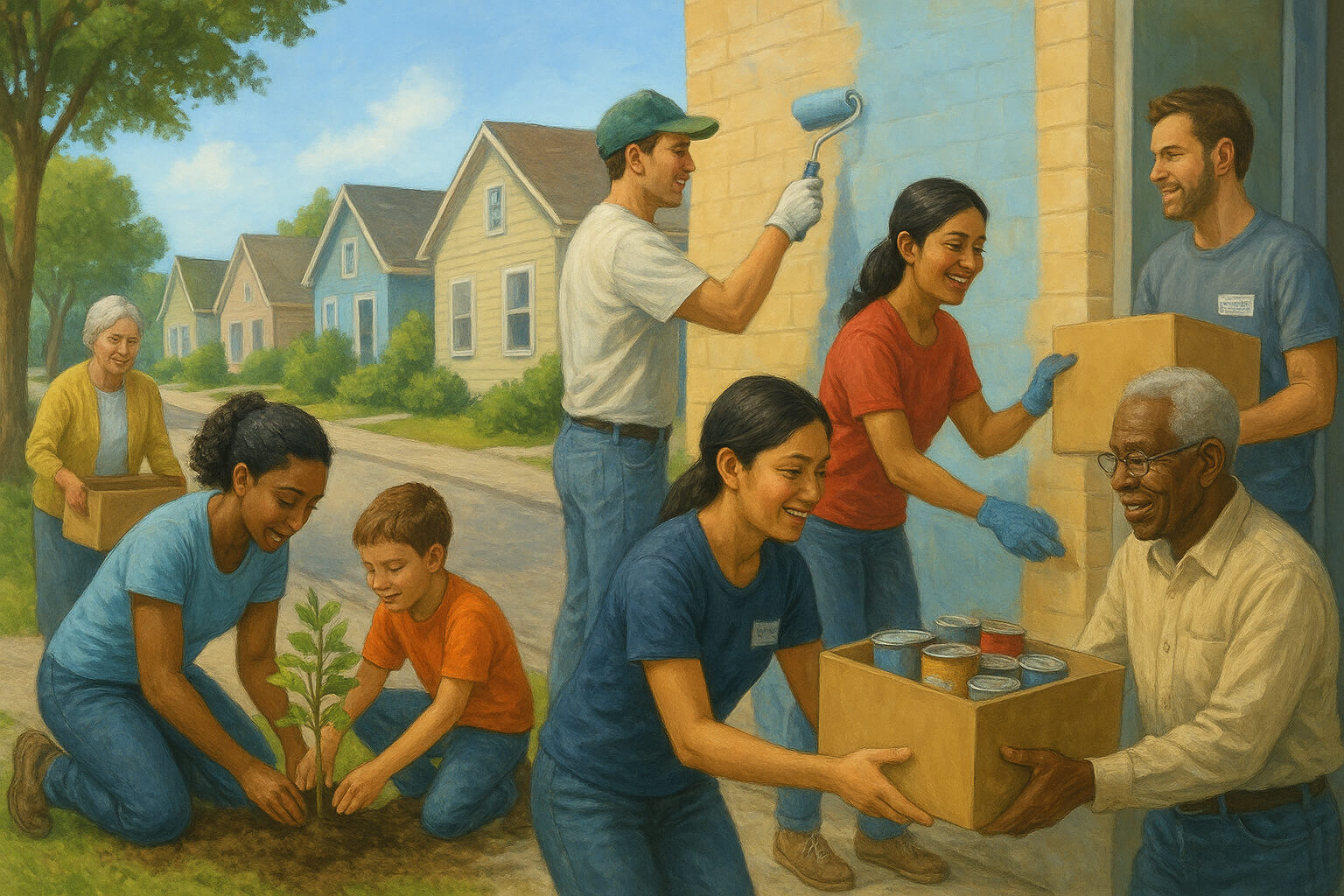September 11, 2025

Non-profits are often seen as organizations with niche missions or limited scopes—but in reality, they are cornerstones of resilient societies. From the neighborhood level to the global stage, non-profits serve as first responders, community builders, educators, advocates, and changemakers.
They address urgent needs where institutions fall short, but they also go further—fostering empowerment, equity, and sustained development. In doing so, non-profits don’t just support individuals—they strengthen the social fabric that holds communities together.
Let’s explore how they do it.
One of the most visible roles of non-profits is delivering critical, life-sustaining services—especially to those who are underserved, marginalized, or in crisis. While governments may offer broad safety nets, non-profits often fill the gaps, acting swiftly and with local knowledge.
Many of these services operate on limited budgets, yet their impact is profound and immediate.
See the ripple effects of service delivery in Water, Sanitation, and Hygiene (WASH) Initiatives: A Global Imperative, which showcases how non-profits literally save lives by addressing basic needs.
Communities are more than just physical places—they’re networks of relationships. Non-profits nurture these connections by creating spaces for people to come together.
In a time when social isolation and division are rising, non-profits play a critical role in rebuilding trust and togetherness.
Learn more in Why Community Engagement is Crucial for Social Change, which highlights how genuine participation builds lasting bonds.
While direct services meet urgent needs, empowerment-focused programs create lasting transformation. Many non-profits design initiatives that equip people with tools to improve their own lives—fostering independence, resilience, and dignity.
This shift from charity to capacity-building is crucial—it allows individuals and families to break cycles of poverty, contribute to their communities, and become agents of their own futures.
Read The Role of Non-Profits in Economic Empowerment to see how skills training and access to opportunity can lift entire communities.
Non-profits aren’t only service providers—they’re also powerful voices for systemic change. By leveraging grassroots insights, data, and community stories, they influence public policy and institutional reform.
In these roles, non-profits act as bridge-builders between communities and policymakers, ensuring that legislation reflects real needs—not just elite interests.
The National Council of Nonprofits highlights how advocacy is a foundational element of nonprofit impact—and a crucial lever for democratic participation.
Non-profits serve as catalysts for civic life, offering pathways for people to take action on the issues they care about. They nurture a culture of participation over passivity, empowering everyday individuals to contribute meaningfully.
...non-profits help people find their voice and their agency.
Volunteers, in turn, often discover a sense of purpose, community, and growth, which creates a cycle of engagement that continues beyond the initial act of service.
Discover more in What Drives People to Volunteer? Insights and Motivations, which breaks down the many reasons people step up—and keep coming back.
The most effective non-profits go beyond "band-aid solutions." They analyze root causes, invest in community leadership, and work in partnership with public and private sectors to design innovative, sustainable interventions.
In these ways, non-profits are dynamic systems thinkers, addressing short-term symptoms while working toward long-term solutions.
Non-profits are more than service providers—they’re architects of possibility. They turn compassion into action, spark hope where it’s needed most, and build bridges that connect isolated individuals to collective strength.
Through essential services, empowerment programs, advocacy, and engagement, non-profits weave the social fabric that binds communities together. They help people not just survive, but thrive—creating ripple effects of stability, resilience, and progress.
Supporting non-profits—whether through volunteering, donations, partnerships, or policy advocacy—is one of the most powerful ways we can invest in a stronger, fairer, more connected future.
Stay up to date with the latest tips, expert insights, product reviews, and step-by-step guides to help you grow, create, and succeed—no matter your industry or passion.